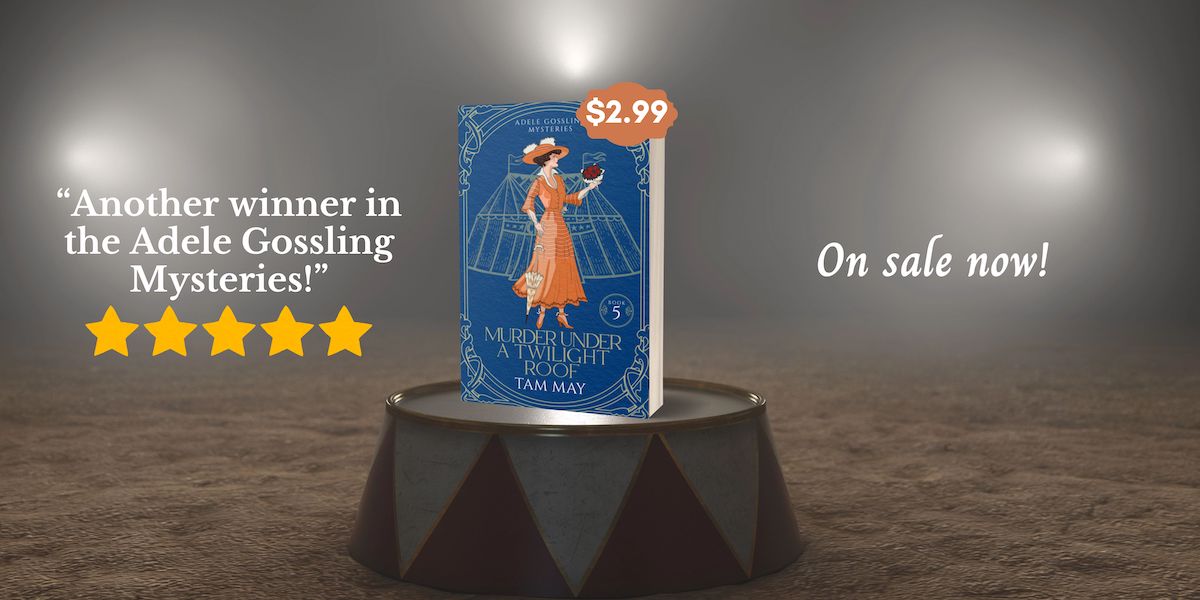
Title: The Complete Waxwood Series Box Set: Books 1-4
Series: Waxwood Series
Author: Tam May
Genres: Historical Fiction/Women’s Fiction
Release Date: June 29, 2024
One woman’s journey to self-discovery in the Gilded Age could destroy everything she’s ever known.
“May’s historical fiction picks apart the delicate facade of American gentility in upper-class, well-heeled families on the wild West Coast at the end of the nineteenth century.” – Lisa Lickel, author and blogger, Living our Faith Out Loud
In this 4-book box set:
Book 1: The Specter: Vivian Alderdice is not your typical Gilded Age debutante. In the midst of her glamorous life of parties and balls, her grandmother dies. A woman shows up at the funeral claiming the woman she knew was not Penelope Alderdice, Nob Hill socialite and wife of the city’s biggest shipping tycoon but Grace Carlyle, an artist in search of adventure in a small coastal town named Waxwood. Is the intruder a crank or, as Vivian’s mother claims, “confused”? Or is she telling the truth? Vivian’s determination to find out takes her into the life of the woman she thought she knew, uncovering family lies kept hidden for over forty years.
Book 2: False Fathers: At nineteen, Vivian’s brother Jake has a huge burden on his shoulders. His mother expects him to take his place as the new head of the family, but Jake hardly has the qualities of a patriarch. When the family goes to Waxwood for the summer, Jake befriends an older, illusive man prepared to teach him all he needs to know about Gilded Age manhood. But is his mentor all he claims to be? Or is he a wolf in sheep’s clothing? Will Jake discover the true meaning of Gilded Age masculinity or will he redefine it?
Book 3: Pathfinding Women: Vivian Alderdice is now twenty-six, unmarried, and has no prospective suitors. Her brother’s tragic plight the year before left the family on shaky ground in Nob Hill society. Their social position depends on Vivian capturing the heart of a wealthy Canadian bachelor determined to become a member of their exclusive society. But to win him, she and her mother must spend the summer in Waxwood. When a young man she meets on the train brings skeletons of the past out of the closet, Vivian finds herself torn between fulfilling her social obligations or embarking on a journey to uncover more family lies. Will Vivian’s summer unravel truths that might destroy the Alderdices forever? Or will she unearth a more authentic version of herself as the new century approaches?
Book 4: Dandelions: For Vivian Alderdice, the twentieth century begins with a new start. Now a working woman and progressive reformer, she’s forsaken the elegance of Nob Hill for the more modest Waxwood. She’s laid Penelope Alderdice’s specter to rest at last. But Vivian’s peaceful existence is thrown into turmoil when the man who ruined her brother’s life appears like another specter she must exorcise. At first, Vivian hates him with a passion. But when she sees how his own undiscovered past has destroyed him, leaving him helpless in the hands of a cousin who hates him worse than she does, she finds herself wanting to help. Is it his journey Vivian will discover in the dark forest of guilt and betrayal or her own?
About the Author

Writing has been Tam May’s voice since the age of fourteen. She writes stories set in the past that feature sassy and sensitive women characters. Tam is the author of the Adele Gossling Mysteries which takes place in the early 20th century and features suffragist and epistolary expert Adele Gossling whose talent for solving crimes doesn’t sit well with her town’s conventional ideas about women’s place. Tam is also working on a new series, the Grave Sisters Mysteries about three sisters who own a funeral home and help the county D.A. solve crimes in a 1920s small California town, set to release in 2025. She has also written historical fiction about women breaking loose from the social and psychological expectations of their era. Although Tam left her heart in San Francisco, she lives in the Midwest because it’s cheaper. When she’s not writing, she’s devouring everything classic (books, films, art, music) and concocting yummy plant-based dishes, and exploring her new riverside town.
Social Media Links
Facebook: https://www.facebook.com/tammayauthor/
Instragram: https://www.instagram.com/tammayauthor/
Pinterest: https://www.pinterest.com/tammayauthor/
Amazon Author Page: https://www.amazon.com/Tam-May/e/B01N7BQZ9Y/
BookBub Author Page: https://www.bookbub.com/authors/tam-may
Goodreads Author Page: https://www.goodreads.com/author/show/16111197.Tam_May







